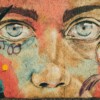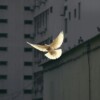In a recent New York Times column, Ross Douthat explored “the reasons behind a seemingly unreasonable belief” (namely, the belief that the presidential election was stolen). Some points that Douthat raises in his essay about this “post-truth” age have implications for our task in helping our students to research well, with soundness of materials as well as methodology.
In three decades of teaching in the humanities (it’s perhaps different in the more objective hard sciences), I’ve found the greatest mental obstacle for students to overcome in doing research is simply accepting that good scholarship begins with materials outside of themselves. Living in a culture that values “originality” and “creativity” so much more than tradition and authority, students have, I believe, internalized the notion that their academic material must be “unique” and “new,” even at the undergraduate level. (In fact, I’ve long thought that this often-unconscious idea lurks behind the reluctance students can have to documenting sources, which, of course, can lead to plagiarism.)
To dispel these problems, I usually share with my students the lesson from Jonathan Swift offered in a vignette within his brilliant 1704 allegorical satire, The Battle of the Books. This story within the story consists of a discourse between a spider (a “Modern,” who symbolizes for Swift the worst of modern subjective thinking) and a bee (an “Ancient,” who symbolizes the best of traditional classical learning). Swift uses the allegory to critique the modern approach to learning (both its methods and materials). The conclusion of the argument between the insects over which of them is superior is delivered by the bee, who is entangled in the weak “building” (the web) made by the spider:
Now, for you and your skill in architecture and other mathematics, I have little to say: in that building of yours there might, for aught I know, have been labour and method enough; but, by woeful experience for us both, it is too plain the materials are naught; and I hope you will henceforth take warning, and consider duration and matter, as well as method and art. You boast, indeed, of being obliged to no other creature, but of drawing and spinning out all from yourself; that is to say, if we may judge of the liquor in the vessel by what issues out, you possess a good plentiful store of dirt and poison in your breast; and, though I would by no means lesson or disparage your genuine stock of either, yet I doubt you are somewhat obliged, for an increase of both, to a little foreign assistance. Your inherent portion of dirt does not fall of acquisitions, by sweepings exhaled from below; and one insect furnishes you with a share of poison to destroy another. So that, in short, the question comes all to this: whether is the nobler being of the two, that which, by a lazy contemplation of four inches round, by an overweening pride, feeding, and engendering on itself, turns all into excrement and venom, producing nothing at all but flybane and a cobweb; or that which, by a universal range, with long search, much study, true judgment, and distinction of things, brings home honey and wax.
In other words, the hubristic spider builds a deathtrap of dirt and poison, the bee tells him, by “drawing and spinning out all from yourself.” In contrast, the humble bee—with range, search, study, judgment, and distinction—culls from good sources outside himself and thereby produces sweetness and light.
Swift identified the problem for the “Moderns” as this inward turn, the propensity to draw from the paucity of one’s inner self rather than from the plenty of a long tradition of outward turning “Ancients.” This turn to the subject is, of course, what defines modernity.
But here where we sit in late modernity (some would say postmodernity), the categories aren’t so neatly bifurcated. The boundaries between objective and subjective are blurred and ever blurring. The soundness of our methods (to invoke a haunting phrase from Joseph Conrad’s Heart of Darkness) cannot be separated from the soundness of our materials. Both form and content matter.
As Douthat points out in his essay, those who believe and disseminate conspiracy theories may, in fact, be sound in the form of their arguments. Thus, he rightly cautions those tempted to dismiss or mock conspiracy proponents that because “there’s more reasoning involved in conspiracy theorizing than official wisdom suggests . . . there’s an obligation to actually make the case against them rather than just laugh them away.” In other words, we must counter reasoning with reasoning.
But it’s not merely reason for reason’s sake at play in this cultural moment. There is something much deeper, much more essential to the spirit of the modern age (something Swift sensed even if he couldn’t quite articulate it 300 years ago) in all this. That something is identity.
Modern American culture is characterized, as Douthat puts it, by “extremely smart people whose self-identification is bound up in constantly questioning and doubting official forms of knowledge” (emphasis added). With nearly 40% of all American adults having a college degree, our nation is more educated than ever before. And that rate has rapidly escalated over the course of two generations. We are a society that identifies as more educated, competent, and authoritative than ever, and we have access to more information than ever. To return to the symbols of Swift’s allegory, it is easy to think we are bees, who “with long search, much study, true judgment, and distinction of things, [bring] home honey and wax.”
However, the digital age has made so much information available that “doing your research” (in the popular parlance) leads more often than not to vast fields of disinformation, misinformation, fake news, clickbait, and conspiracy theories. As Douthat warns, when “strong belief spurs people to go out in search of evidence, a lot of so-called disinformation is collected and circulated.” And “What can we reason, but from what we know?” asked Alexander Pope, a friend and contemporary of Swift, in An Essay on Man. Pope’s pointed reminder of the limits of human knowledge is needed more now, perhaps, than it was when knowledge was exploding in the early Enlightenment. As we “expatiate free o’er all this scene of man,” in the words of Pope, we can, like a monstrous hybrid of bee and spider, search for external evidence merely in support of our internal preferences and biases.
In past years, I have exhorted my students simply to “be bees, not spiders” as they approach the task of research. I see now that the challenge is increasingly to better equip students to distinguish between poison and nectar, to build from strong materials rather than to create airy edifices which, like spiderwebs, are easily swept away once their lethal work is done.
But the greater hint I draw from Douthat’s essay, along with my long study of the Modern Age that brought us to this place, is that we must also help students know that their identity is not in what they know, but rather in the one who made them. Each of them is like no other, yet all are made in the image of a Creator who is the source of all that is beautiful, good, and true.
























One Comment